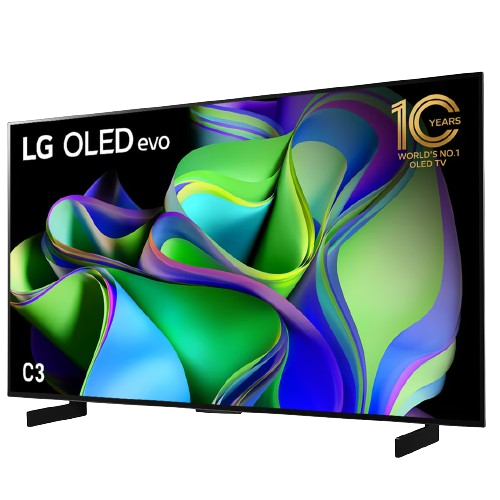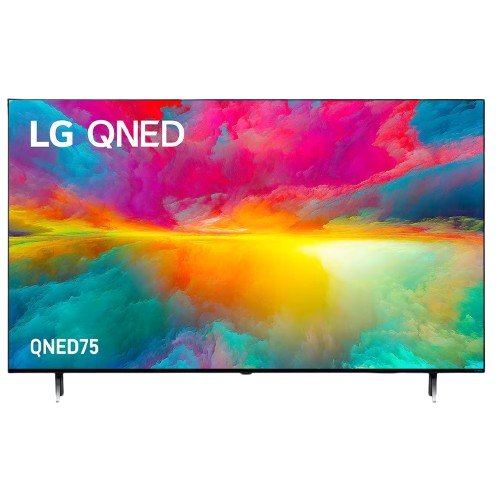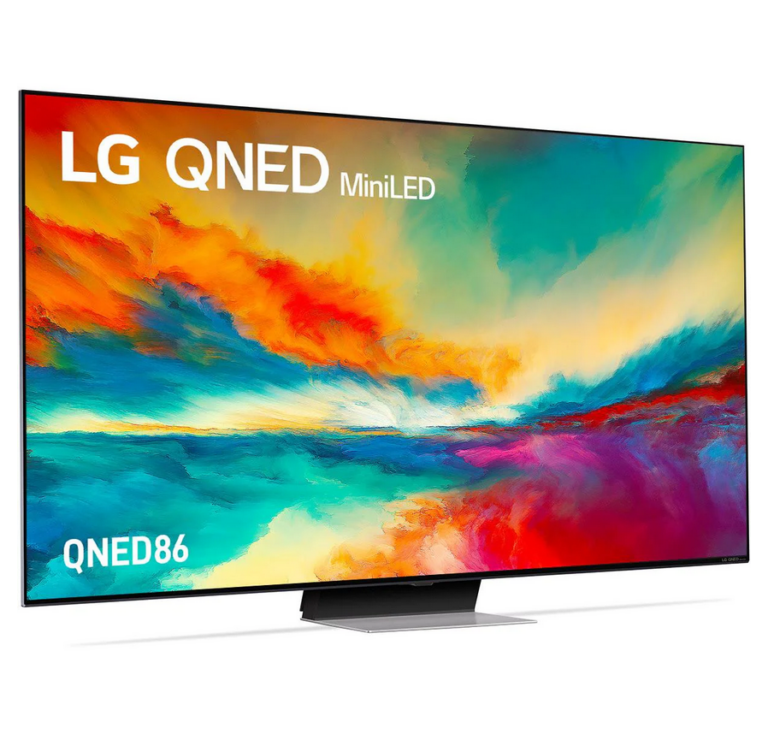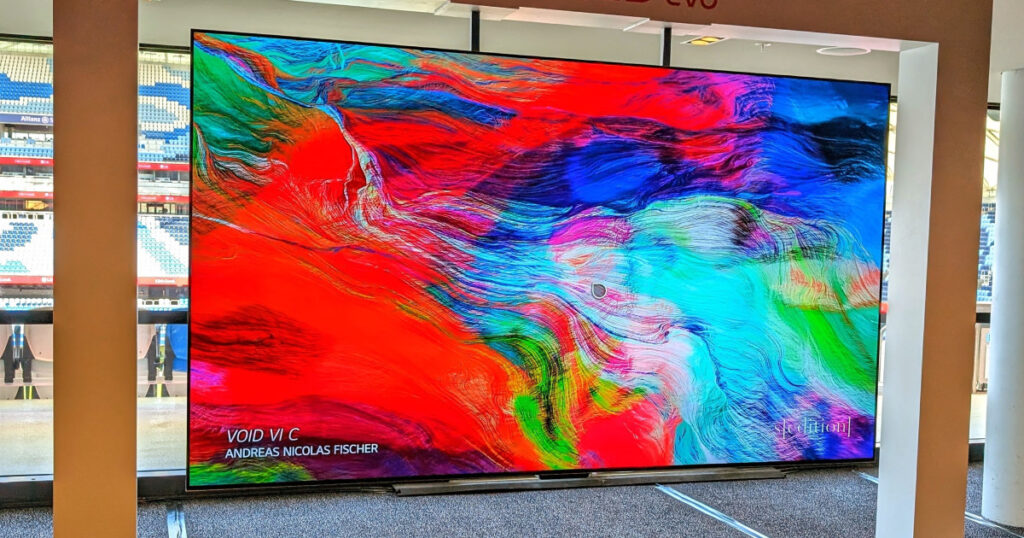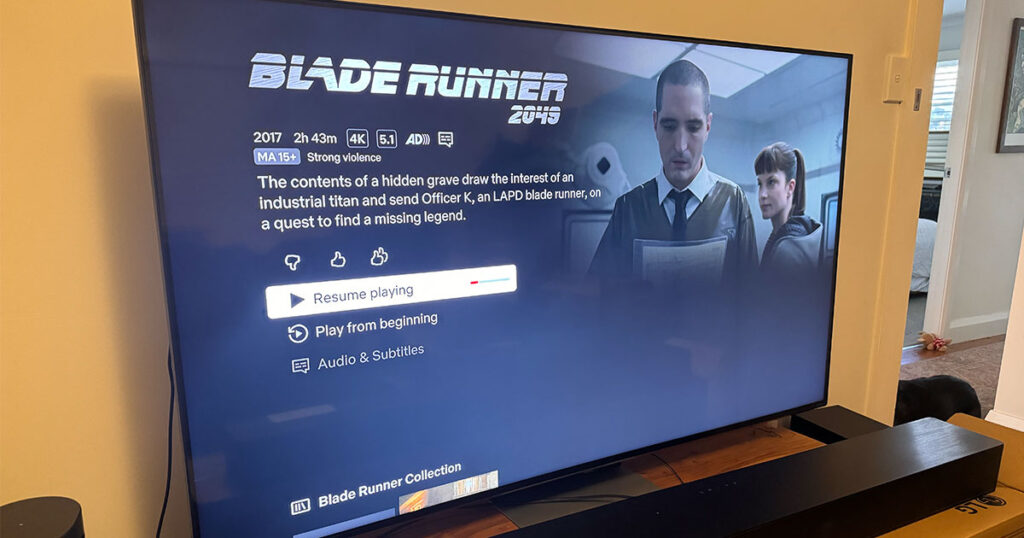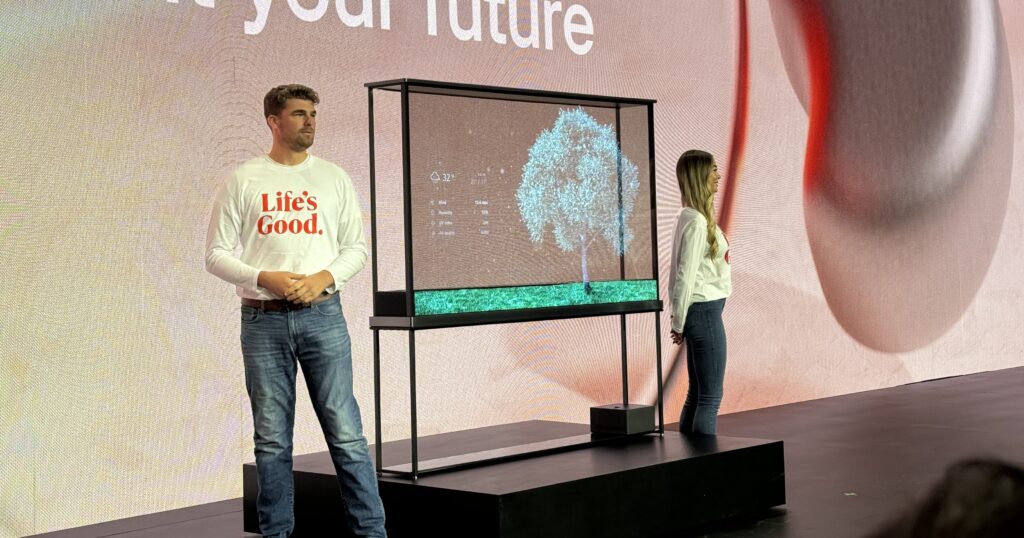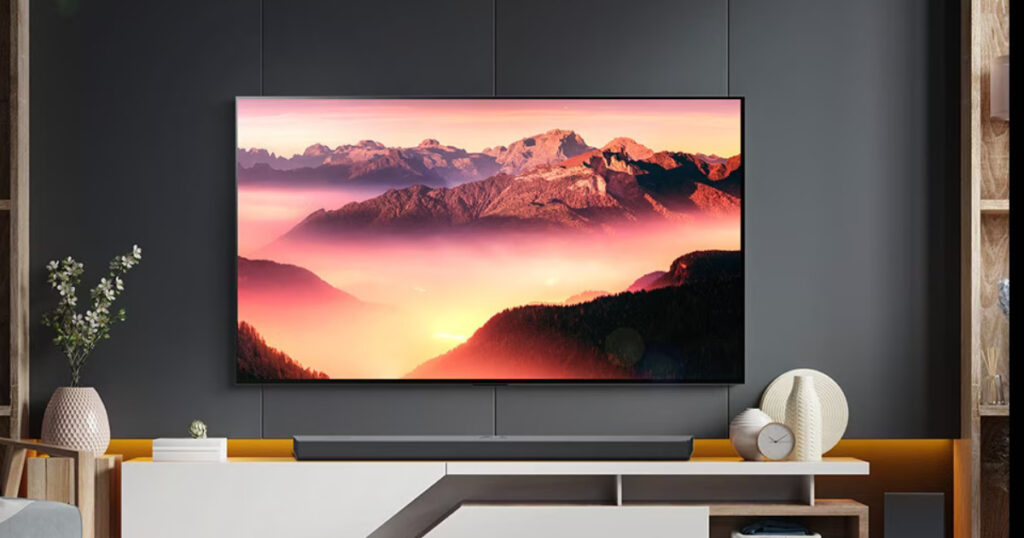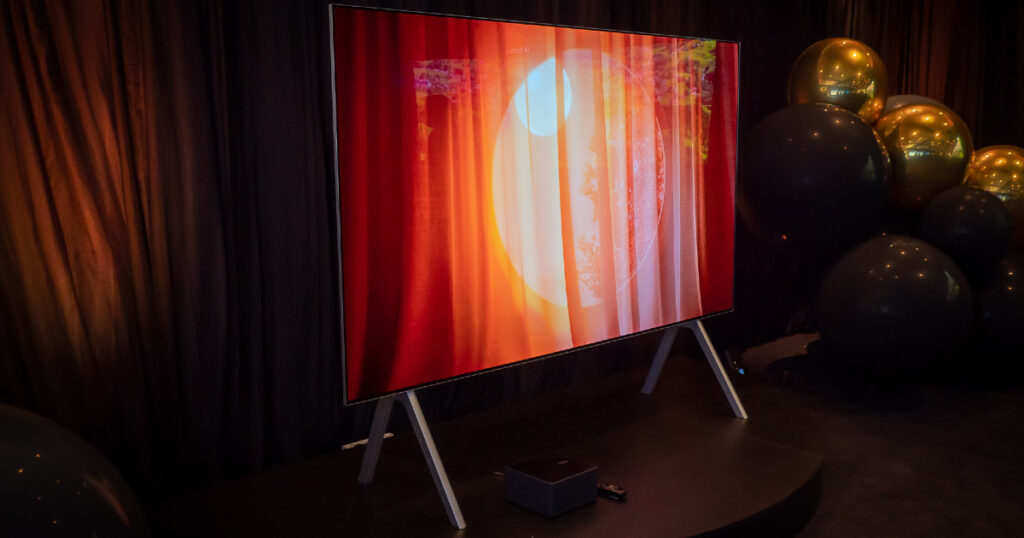LG's early investment in OLED is still paying dividends, but its QNED line may be the better buy for some.
LG TVs in Australia: Specs, features and pricing compared
LG TVs 2024 value for money
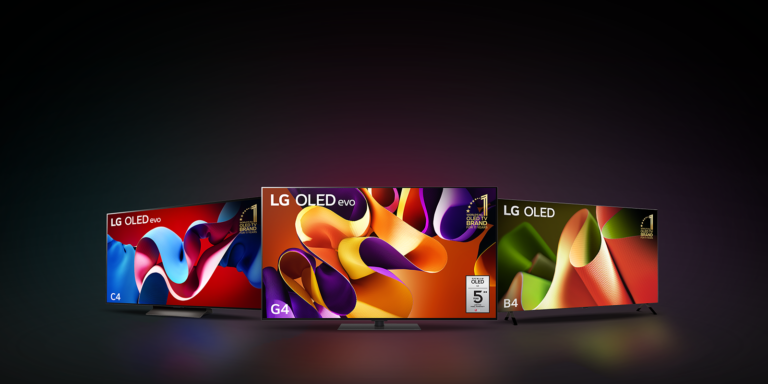
It's that time of year again. LG is bringing a bagful of new 4K TVs to Australian living rooms over the next few months. As usual, the most straightforward way to unpack the hodge-podge of model numbers and buzzwords is to focus on the display technologies involved.
Like many modern TV brands, LG's latest offering consists of OLED TVs and QNED TVs. The latter is an evolution of LG's older NanoCell line, which was itself a spin on the traditional LCD-LED formula. LG's QNED TVs bolster the existing strengths of the brand's NanoCell TVs by adding a layer of Quantum Dots akin to what you can find in other TV brands like Samsung.
In any case, LG's 2024 lineup currently consists of four OLED TVs, four QNED TVs and a single budget-friendly UHD TV. Every model here is available in a range of sizes that go as large as 98 inches and as small as 43 inches.
There's no hard and fast rule here, but if you do care more about size and less about picture quality then you're probably going to find more bang for your buck with a LG QNED TV than you might with an OLED one. While the latter possesses unique advantages, those perks do come at a premium.
LG's OLED TVs come in four varieties:
- The M series (currently M4)
- The G series (currently G4)
- The C series (currently C4)
- The B series (currently B4)
The one thing to note when it comes to LG's OLED TV is that more expensive models are billed as OLED Evo. These TVs feature a brighter EVO panel rather than the more standard implementation of OLED found elsewhere.
Otherwise, these letters provide a pretty easy shorthand.
The B series is budget-friendly. The C-series is a little more expensive but comes with additional features like a better processor and an Evo panel. The G series has an even better processor and a slimmer design while the ultra-exxy M series is an updated version of the wire-free TV that LG introduced in 2023.
The QNED line is a little harder to parse at a glance. As with LG's OLED line, there are four main models on offer:
- QNED91
- QNED89
- QNED86
- QNED81
The QNED 91 is the top dog here. It's the only model with a Mini-LED backlight. Stepping down to the QNED89 means losing that, but this model still has a more sophisticated backlight than LG's other QNED TVs do. Since the two share the same processor, backlighting is the main difference between the QNED86 and QNED and QNED 89. Dropping down to the QNED 81 means ditching that. The cheapest of LG's QNED TVs has an Alpha 5 processor instead.
Even if the transparent LG OLED seen at CES is nowhere to be seen, there are still plenty of options when it comes to LG TVs in 2024. For a snappy breakdown of how LG's 2024 TVs differ, check out the table below.
WTF is QNED?
LG has previously positioned its NanoCell TV as a rival and alternative to the Quantum Dots found in Samsung’s QLED TVs. Its newer QNED models zag in the other direction by combining the best of both worlds.
QNED doesn’t reinvent the fundamentals of how LCD-LED TVs work, but it does elevate the results the technology can deliver. You get the richer and more accurate colours commonly associated with Quantum Dot, deeper blacks and a sharper contrast than you would usually get out of a NanoCell TV.
LG TV 2023 pricing
For a full breakdown of how LG has priced its 2024 QNED and OLED 4K TVs in Australia, check out the table below.
LG 2023 Neo QLED 4K TV pricing
For a full breakdown of how LG has priced its new OLED 4K TVs, check out the table below.
LG 2024 OLED TV pricing
What happened to LGs 8K TV?
Last year, LG brought two 8K TVs to Australia: the QNED99 and the OLED Signature Z3. The manufacturer has yet to issue a new version of either in 2024. However, that's not necessarily a huge surprise or a sign that it won't.
In years past, LG has tended to refresh its limited line of 8K TVs a few months after the bulk of the roster. Right now, the manufacturer doesn't have any new models with 8K resolution on offer but that situation is probably a temporary one.
What about the LG Stanby Me TV?
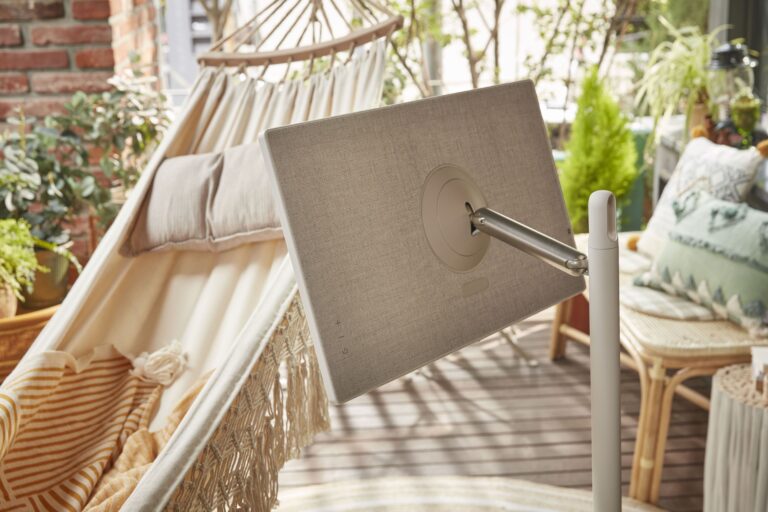
Like Samsung, LG has started to dabble in the lifestyle TV space in recent years. Its StanbyMe TV is a portable 27-inch "Smart Screen" TV with FHD resolution and a wheely-stand. Removed from a power source, you'll get about 3 hours of playtime from a charge. It's not going to be for everyone, but it's proved popular enough with those who do dig it that LG is keeping it in the mix for the time being.
Under the hood, the Stanby Me is equipped with an Alpha 7 processor. The touch-sensitive screen here may not be 4K, but it does support HDR content. In addition to the flexibility that comes with a portable built-in stand, other features of the LG Stanby Me include fast and easy content sharing and the ability to rotate the screen to a vertical orientation.
Priced at RRP of $1999, the LG Stanby Me is only available in a single size. Check out the table below for a full breakdown of Australian pricing and deals for LG's lifestyle TV.
LG TVs features and upgrades
LG 2024 TV features
- Smart TV Operating system: Every LG TV in the range is powered by Web OS
- Mini LED backlight: Only on QNED91
- QNED Color Pro: Only on QNED 91
- Dolby Vision & Atmos: On QNED 91 and all OLED models
- HDMI 2.1: On QNED 86, QNED 89, QNED 91 and all OLED models
- Precision dimming: QNED 89 and QNED 91
- Dimming pro: QNED 86 and QNED 81
- OLED dynamic mapping pro: Every OLED model except B4
- Zero connect box: M4 only
- One wall design with bracket: M4 and G4 only
- 144Hz game mode: OLED C4, G4 and M4
If you're looking to tease out the differences between this year's LG TVs and their 2023 counterparts, there are two key things you'll want to focus on.
The first is the processors inside a given model. This year, the more expensive (and OLED-based) models come with LG's new Alpha 11 processor. This silicon promises a 30% increase in processing speed compared to the Alpha 9 processor. Less expensive (and QNED-based) models tend to feature older processors instead.
That downgrade isn't the be-all-end-all but it is something to keep in mind if you're looking to tease out the differences and find the model that best suits your budget and needs.
Another key consideration here is the backlighting.
If you pick up any of LG's OLED TVs, you'll reap the benefits of per-pixel dimming. However, if you opt for QNED instead, there's a variety of different of backlighting systems on offer.
These differ in both fidelity and sophistication, with the cream of the crop being the Mini LED-powered precision dimming found in the LG QNED 91. The "Local Dimming" and Dimming Pro" found in the QNED 81 and QNED 86 work more-or-less the same way, but offer less impressive results.
While these names aren't very intuitive, the fundamentals of TV backlighting haven't changed in 2024. The more dimming zones a TV has, the less likely you are to end up in a situation where brighter parts of the screen can bleed into darker areas.

Chromecast and AirPlay
All of LG's latest TVs come with support for both Chromecast and Air Play 2 out of the box.
Past those hardware changes, the main tweak that LG has made to the formula this time around isn't a matter of design or picture quality. It has to do with pricing.
This trend towards thriftiness isn't universal but it is welcome given the ongoing issues around inflation and the cost of living. Some models are as much as 25% cheaper than the launch pricing of their 2023 counterparts. For example, last year's LG 55-inch B3 OLED arrived with a $3,149 RRP. This year's B4 comes in at $2,499.
LG TV streaming services
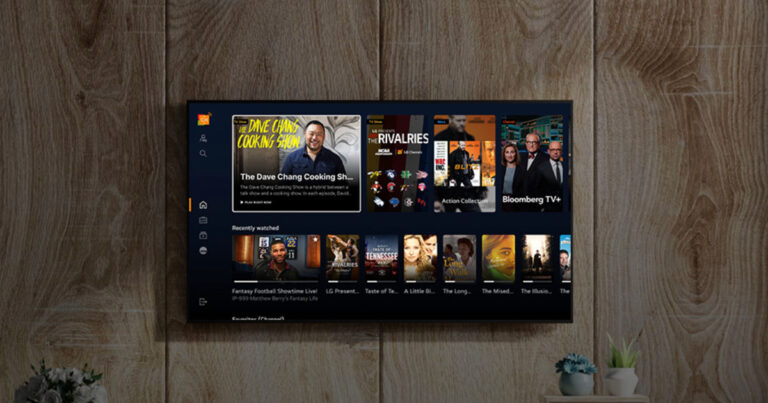
LG's 2024 TVs run on the same WebOS operating system that powered previous models but incorporate a range of new sports-centric features, such as live alerts and scores for specific teams.
LG's 2024 TVs support the following streaming services:
- Netflix
- Disney Plus
- Stan
- Apple TV Plus
- Amazon Prime Video
- YouTube
- ABC iView
- SBS OnDemand
- Hayu
- Paramount Plus
- Tubi
- LG Channels
- Britbox
- Binge
- Foxtel Now
- Optus Sport
- Kayo
- 9Now
- 10Play
- 7Plus
- Funimation
- Crunchyroll
*Accurate at time of publication
Stream for free tonight with these trials
Looking for something new to stream tonight? These services offer free trials so you won’t pay a cent unless you decide to keep subscribed once your trial’s up.
- Paramount+ 7-day free trial: Stream Dexter, Criminal Minds, Taskmaster and more
- Apple TV+ 7-day free trial: Stream Severance, CODA and more award-winning TV shows and movies
- Prime Video 30-day trial: Award-winning originals and shopping perks
- Foxtel Now 10-day trial: Wide range of live and on-demand content, including TV shows, movies and sports events
- Binge 7-day free trial: Foxtel's streaming service offering some of HBO's most popular series
LG TV customer support and satisfaction
LG is launching these new models alongside a promise of five years of software updates. If you need help with that or a hardware-related issue, you can hit LG's customer support team up via live chat, email, WhatsApp and telephone.
You can contact LG Australia's customer support line from 8 AM to 8 PM every day of the week using the following phone number:
- 1300 54 2273
When it comes to big brands like LG and consumer review platforms like ProductReview, TrustPilot and Consumer Affairs, negative experiences tend to rise to the top. That's very much the case when it comes to LG TVs, with low customer satisfaction indicators across the board. The numbers don't inspire much confidence, even if they aren't all that far off where rivals like Samsung sit.
As with Samsung, it probably doesn't help that, LG Australia plays in a lot of different consumer tech categories. This alone makes it tricky to tease out just how many of the negative customer support experiences online have to do with how it fares when it comes to TVs specifically.
If you're looking to get a sense of what a bad customer experience with LG can look like, these sites will give you some sense of what to expect. However, I wouldn't necessarily use them as a barometer of how likely you are to end up in that situation.
️🔥 Save up to $700🔥
️🔥 Save up to $400🔥
️🔥 Save up to $1000🔥
*Pricing and deals only accurate as of last page update.
LG TV Warranty
On top of the usual rights offered under Australian consumer law, LG Australia includes a 12-month warranty as standard with any new OLED, QNED or LCD-LED TV. If invoked, this warranty will get you a free repair of a given LG TV if, in the manufacturer's opinion, "it needs repair because of a manufacturing or materials defect appearing and notified to LG" within the period covered by the warranty.
While that sounds pretty standard, there are a few details to keep in mind. If LG's support team decides to go forward with repairing your faulty TV, you'll have to cover the cost of getting it (and potentially from) one of LG's Authorized Service Centres. Those same service centres may also charge an additional fee if you require help outside of usual hours.
Even if you are still in that initial twelve months after purchase, LG's manufacturer's warranty also features several carve-outs and situations where your TV might not be covered. According to LG, the manufacturer's warranty does not cover:
- Repairs where the serial number has been removed or made illegible.
- Repairs where the unit has been used for anything other than a normal domestic application.
- Maintenance, repair or replacement of parts due to normal wear and tear.
- Accident, neglect, improper storage, misuse, exposure to moisture and dampness or Act of God.
- Improper installation or use other than in accordance with operating instructions.
- Unauthorized modifications or other acts, including spills of food or liquid, blown fuses, mains supply defects or external interference which is not a manufacturing or material fault.
- Alterations or repairs made to the unit by someone other than an LG Authorised Service Centre.
- Damage resulting from use of non-LG approved accessories.
- Damage or scratches to plastic surfaces and other externally exposed parts from normal use of the unit.
- Consumables (such as fuses).
- Any loss, damage or alteration to third party hardware or software;
- Any loss, damage or alteration to programs, data or information stored on any media or any part of the product.
Still have questions? You can read the full warranty for LG TVs on the LG Australia website.
Related Articles




